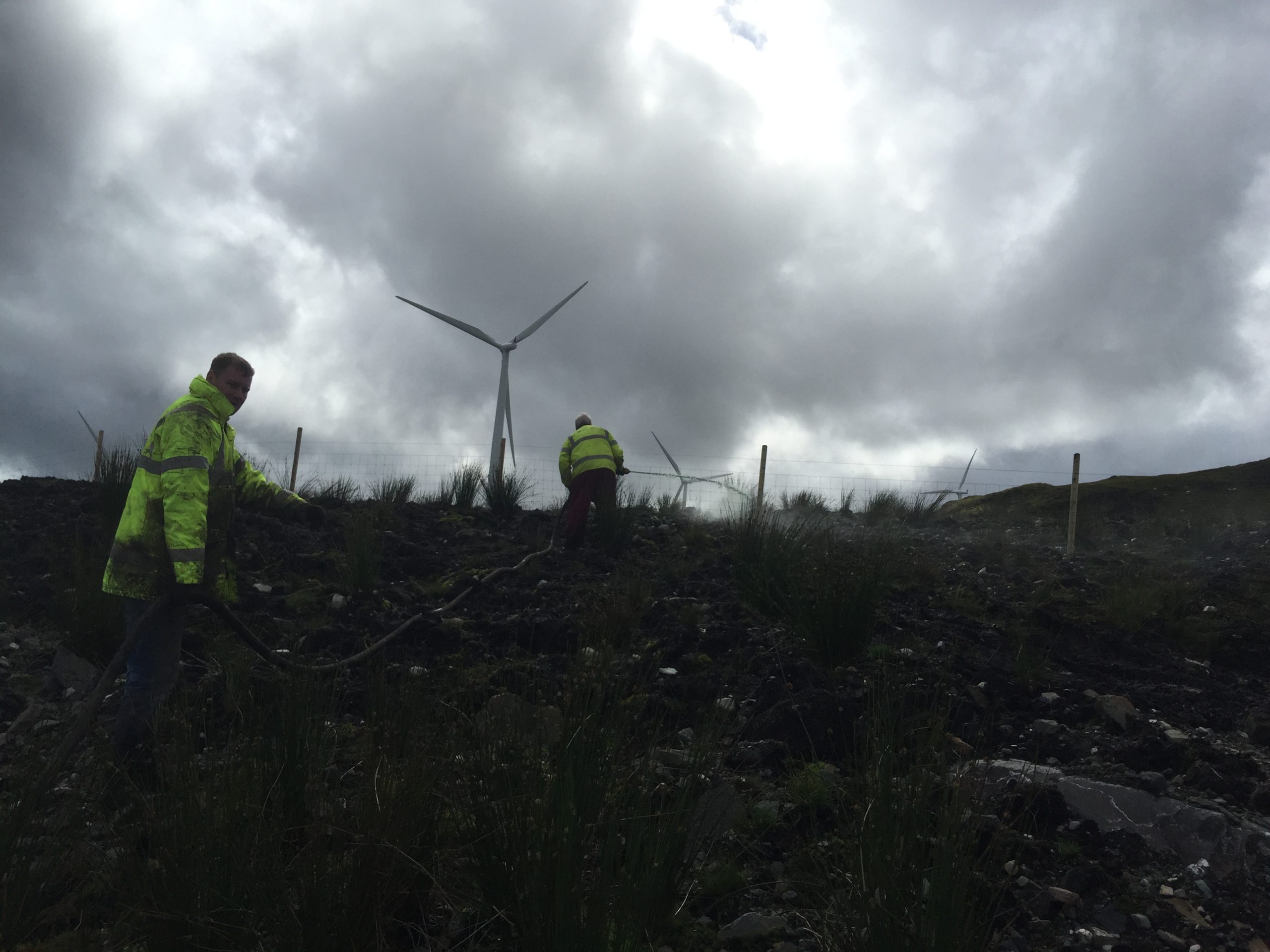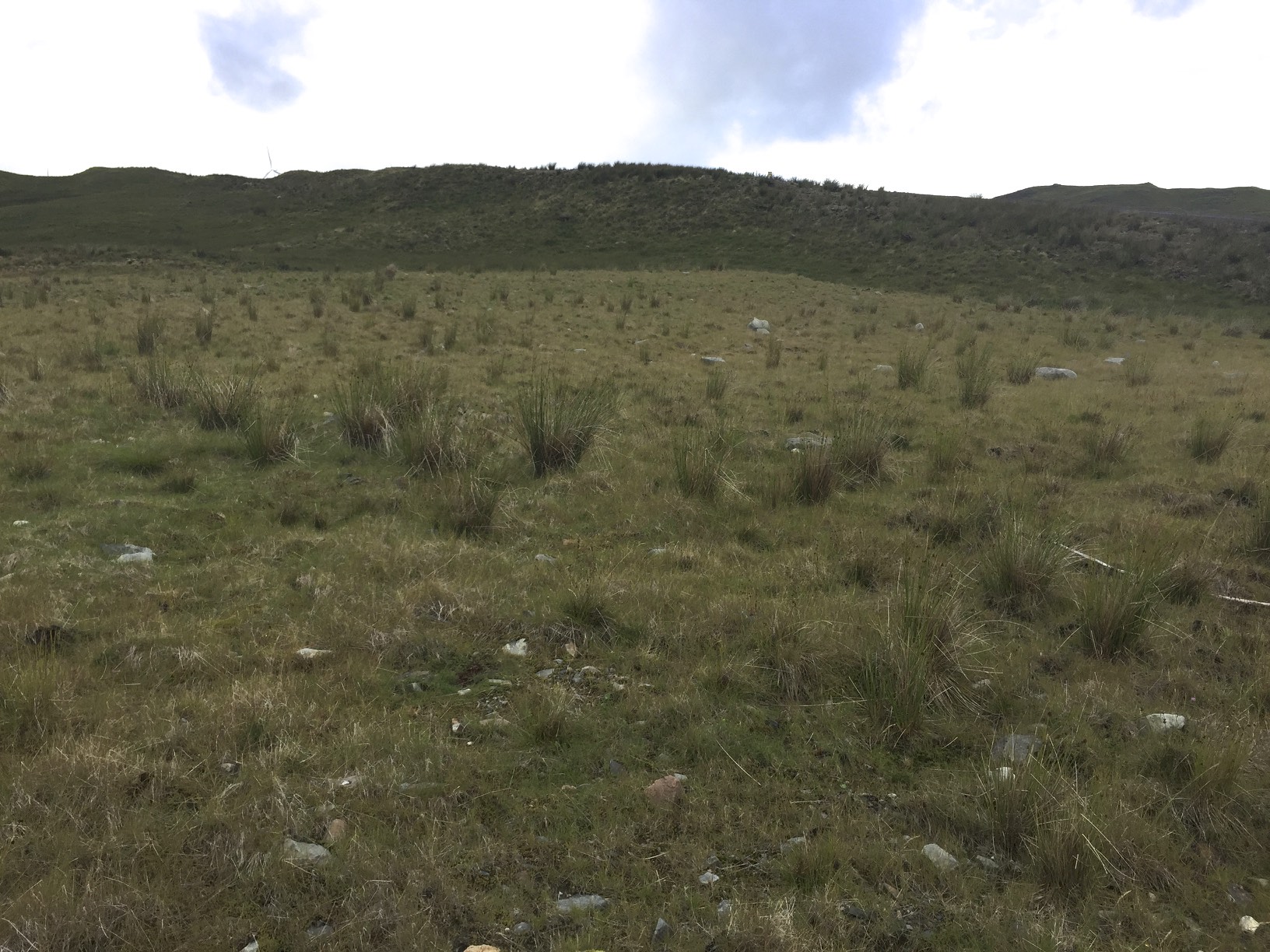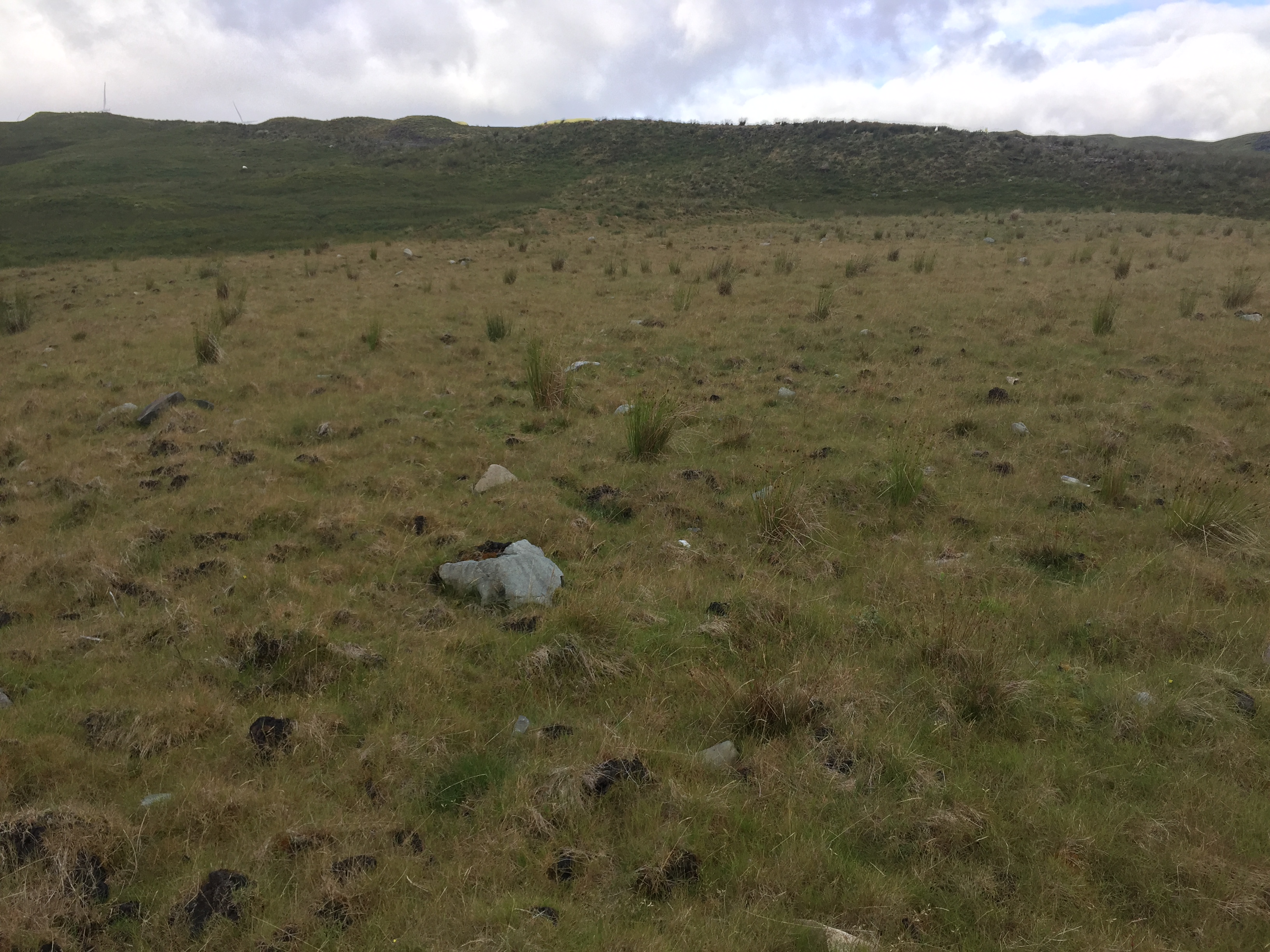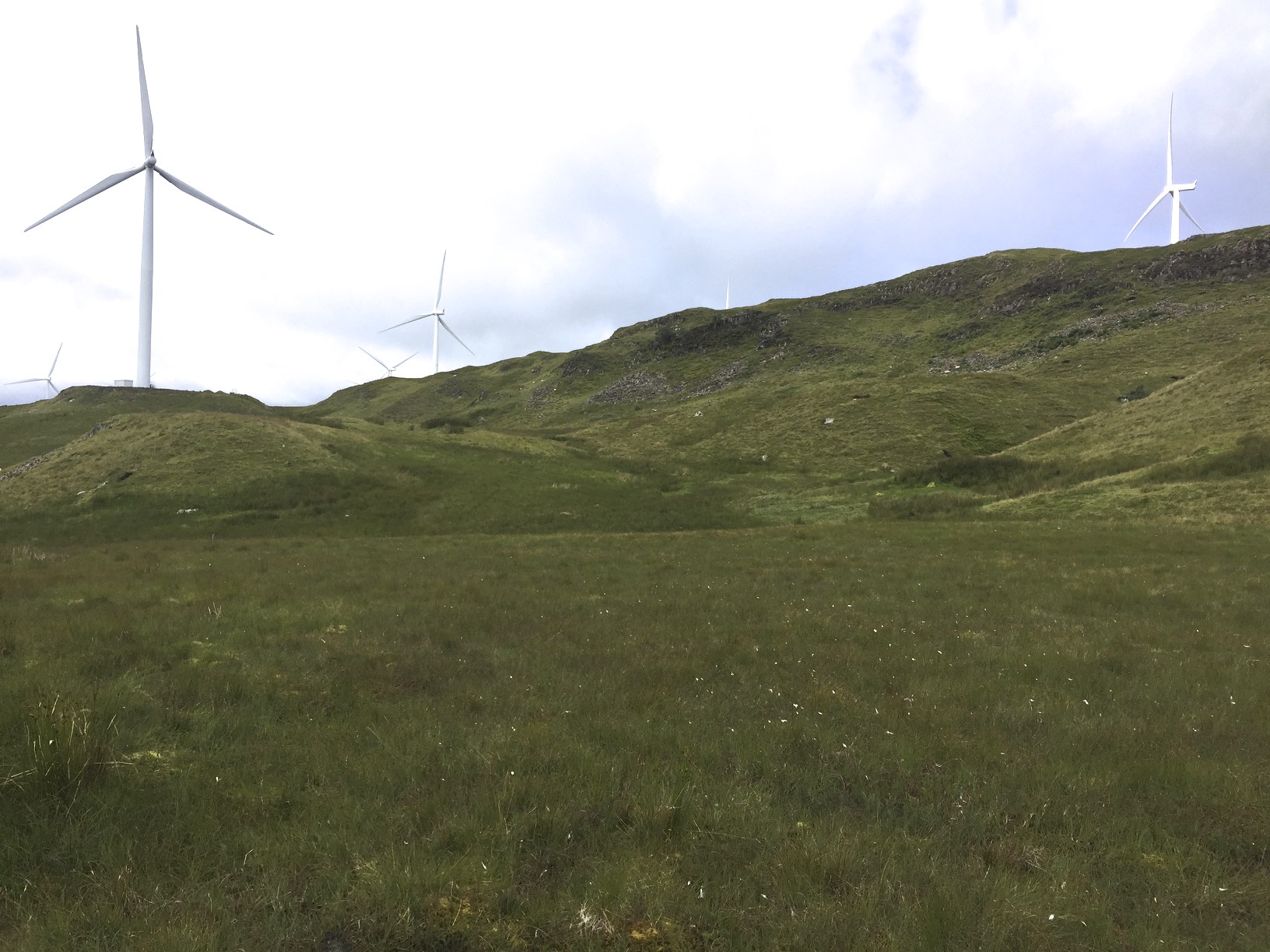Location: West Argyll, Scotland
Area size: 403,000m²
Product: Hydroseeding
Client: GreenPower (Carraig Gheal) Ltd
Project Background
Constructed and managed by GreenPower, The Carraig Gheal wind farm site is located in the Scottish Highlands. Construction of the wind farm required required new site access and building of site compounds, resulting in exposed terrain. We were approached by GreenPower to help reinstate the peatland that had been disturbed during the project build.
Challenges
Our client had very specific expectations and needed continuity throughout the project. It also very clear that no fertiliser was used, however a low application of lime (maximum of 100kg/ha) was allowed on limited areas on the condition it not accidentally carried by wind onto existing native peatland communities adjacent to the areas being hydroseeding. Nor should lime be used in the headwaters of any moorland streams or ditches. By working closely with the Environmental Management Team we were able to ensure that their wishes were met and non contamination of land or water was achieved.
Solution
We looked at 3 priority areas: Firstly the unstable areas of bare ground on slopes that had the potential to cause peat erosion. Secondly all roadside verges and batters with ≥40° slopes across the whole site. Thirdly the ‘restored’ compounds, all areas of bare peat around the first borrow pit and any steep verges along the site road between the compound and the first borrow pit.
We worked closely with the Senior Environmental Manager, using our proposed grass seed mix for Acid Moorlands. Species included, Bents, Fescues and other grasses that thrive in the low ph soil whilst offering a good root structure to prevent erosion. It was also imperative that we did not use any fertiliser but a very low application of lime was used to give the new vegetation better rooting conditions at the reinstated site compound only.
Outcome
The desired outcome of establishing grass onto the exposed soil before winter was a complete success. The barren areas now support vegetation that blend seamlessly into the surrounding peat moorland and the visible signs of ground disturbance caused by construction of the wind farm is fully disappeared.



